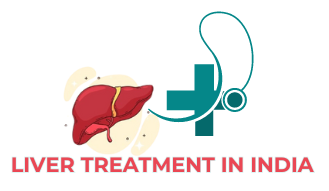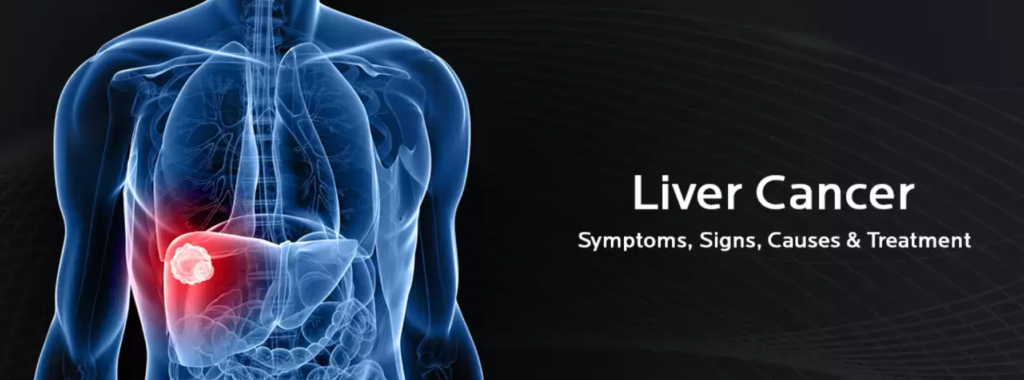Definition and Explanation of Liver Cancer:
Hepatic cancer, another name for liver cancer, is a kind of cancer that begins in the liver. It occurs when there is an uncontrolled growth of abnormal cells within the liver, leading to the formation of tumors. The liver is an essential organ responsible for various functions such as detoxification, metabolism of nutrients, production of bile, and storage of glycogen. Liver cancer can disrupt these functions and pose a serious health risk.
Types of Liver Cancer:
There are several types of liver cancer, including the following:
Hepatocellular Carcinoma (HCC):
This type of liver cancer originates in the bile ducts within the liver and is known as intrahepatic cholangiocarcinoma. It can be challenging to diagnose and treat, as it arises within the liver’s tissue rather than the ducts outside the liver.
Hepatoblastoma (Common in Children):
Hepatoblastoma is a rare type of liver cancer that primarily affects children. It develops in immature liver cells and is typically diagnosed in children under the age of 3.
Angiosarcoma and Hemangiosarcoma:
These are rare types of liver cancer that originate in the blood vessels of the liver. They are referred to as angiosarcoma and hemangiosarcoma, respectively.
These types of liver cancer are relatively uncommon and can be challenging to treat due to their aggressive nature and tendency to spread rapidly.
Risk Factors for Developing Liver Cancer
The risk factors for developing liver cancer are important to understand, as they can help identify individuals who may be at higher risk and require closer monitoring or preventive measures. Here are the details for each risk factor
Chronic Hepatitis B and C:
Chronic infection with the hepatitis B virus (HBV) or hepatitis C virus (HCV) significantly increases the risk of developing liver cancer. These viruses can cause ongoing inflammation in the liver, which can lead to the development of liver cancer over time if left untreated.
Cirrhosis:
Cirrhosis is a late stage of scarring of the liver caused by many forms of liver diseases and conditions, such as hepatitis and chronic alcohol abuse. The presence of cirrhosis greatly increases the risk of developing liver cancer.
This is because the scarring can lead to changes in the liver tissue that make it more susceptible to cancer development.
Non-alcoholic Fatty Liver Disease (NAFLD):
NAFLD is a disorder where the liver stores an excessive amount of fat. In some cases, this can lead to inflammation and damage to the liver, ultimately increasing the risk of liver cancer. NAFLD is becoming a more common cause of liver disease and is associated with metabolic syndrome, obesity, and diabetes.
Alcohol Consumption:
Excessive and prolonged alcohol consumption is a well-established risk factor for liver cancer. Alcohol abuse can lead to liver inflammation, cirrhosis, and eventually, the development of liver cancer.
Genetic Factors:
Certain genetic factors and hereditary conditions can increase the risk of liver cancer. For example, hereditary hemochromatosis and alpha-1 antitrypsin deficiency are genetic conditions that can predispose individuals to liver cancer.
Recognizing Symptoms of Liver Cancer:
These symptoms can vary in severity and may also be indicative of other medical conditions. However, if these symptoms are persistent and unexplained, it is important to seek medical evaluation.
Unexplained Weight Loss:
Unintentional and unexplained weight loss is often an early symptom of liver cancer. It may occur due to a combination of factors, including a loss of appetite, changes in metabolism, and the body’s increased energy requirements as it fights the cancerous cells.
Loss of Appetite:
Individuals with liver cancer often experience a significant loss of appetite. This can be due to the cancer’s impact on the liver’s function, leading to decreased production of bile and digestive enzymes. Moreover, the cancer-related metabolic changes can also contribute to the loss of appetite.
Abdominal Pain or Discomfort:
Liver transplant surgery involves the removal of the diseased liver from the recipient and the implantation of a healthy liver from a donor. The recipient will be under general anesthesia, ensuring they are unconscious and pain-free throughout the procedure. The surgical team will carefully connect the blood vessels and bile ducts of the new liver to the recipient’s body to ensure proper function.
Jaundice:
Jaundice is a common symptom of liver cancer and is characterized by yellowing of the skin and the whites of the eyes. It occurs when the liver is unable to adequately process bilirubin, resulting in its accumulation in the body. Jaundice can also cause dark-colored urine and pale stools.
Advanced symptoms
These advanced symptoms can significantly impact an individual’s quality of life and are indicative of the advanced stages of liver cancer. It’s essential for individuals experiencing these symptoms to seek medical attention for proper evaluation and management.
Swelling in the Abdomen:
Advanced liver cancer can lead to the accumulation of fluid within the abdomen, a condition known as ascites. Abdominal edema, pain, and a heaviness are symptoms of ascites. It occurs as a result of liver cancer disrupting the liver’s ability to regulate fluid balance and protein production.
Easy Bruising and Bleeding:
Liver cancer can affect the production of proteins responsible for blood clotting. Consequently, individuals with advanced liver cancer may experience easy bruising, prolonged bleeding from minor cuts or injuries, and nosebleeds. This is due to reduced synthesis of clotting factors by the liver.
Fatigue:
Fatigue is a common symptom of liver cancer in advanced stages. The underlying cancer, along with potential liver dysfunction and the body’s immune response, can lead to persistent fatigue and a lack of energy.
Additionally, the cancer’s impact on overall health and metabolism can contribute to feelings of persistent tiredness.
Nausea and Vomiting:
Advanced liver cancer can lead to symptoms of nausea and vomiting. These symptoms can be caused by the cancer’s effect on liver function, resulting in impaired metabolism and digestion, as well as increased pressure within the abdominal cavity due to ascites.
Treatment Options
The choice of treatment for liver cancer depends on various factors, including the stage of the cancer, the overall health of the individual, and the presence of underlying liver disease. Treatment decisions are usually made in collaboration with a multidisciplinary team of healthcare professionals, including oncologists, surgeons, and other specialists. For this reason, we at liver treatment in India are renowned for giving our clients access to the best liver transplant specialists in India along with the most up-to-date information accessible, all in an effort to make your consultation process smoother. Specific remedies and supplements may be more safe, effective, and have fewer side effects if they are evaluated by these experts.
Surgery:
- Resection: Surgical resection involves the removal of the part of the liver containing the tumor. This procedure is typically performed when the cancer is confined to a specific area of the liver and has not spread extensively. It is considered the primary curative treatment for liver cancer.
- Liver Transplant: In cases where the tumor is extensive or when the liver has been severely damaged by underlying liver disease, a liver transplant may be considered. This involves replacing the diseased liver with a healthy liver from a donor.
Ablation and Embolization:
- Radiofrequency Ablation (RFA): RFA is a minimally invasive procedure that uses heat generated by high-frequency electrical currents to destroy the cancerous cells in the liver. It is typically recommended for smaller tumors or for individuals who are not suitable candidates for surgery.
- Transarterial Chemoembolization (TACE): TACE involves the delivery of chemotherapy drugs directly to the tumor via the hepatic artery, followed by the embolization of the artery to cut off the tumor’s blood supply. This procedure is often used for larger tumors or as a palliative treatment to reduce symptoms and slow the progression of the cancer.
Targeted Therapy:
Targeted therapy involves the use of drugs that specifically target and interfere with the processes that promote cancer growth. These drugs may be prescribed based on the specific characteristics of the tumor, such as the presence of specific genetic mutations or overexpression of certain proteins.
Immunotherapy:
Immunotherapy works by stimulating the body’s immune system to recognize and attack cancer cells. It can be used in the treatment of advanced liver cancer and may be recommended in combination with other treatment modalities.
Chemotherapy:
Chemotherapy involves the use of powerful medications to kill cancer cells or stop them from growing. It may be administered orally or intravenously and is often used in cases where the cancer has spread beyond the liver or is not amenable to surgery.
Radiation Therapy:
Radiation therapy uses high-energy rays to target and destroy cancer cells. It may be used as a primary treatment for liver cancer or in combination with other treatment modalities.

